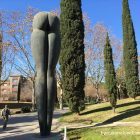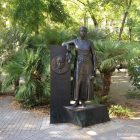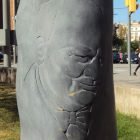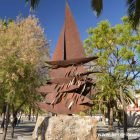Josep Anselm Clavé was a musician, composer, writer and political activist. A committed socialist and founder of choral societies aimed at working-class people, Clavé played an important role in the development of popular Catalan culture during the nineteenth century.

Monument to Josep Anselm Clavé
Inaugurated in 1888, the monument consists of a bronze statue by Manuel Fuxá and a carved stone base by Josep Vilaseca. Fuxa’s statue depicts Clavé conducting one of his choirs, a baton held in his outstretched hand. The neo-classical base includes four carved stone harps and other musical motifs.
Initially installed at the intersection of Rambla de Catalunya and Carrer de Valencia, the monument was widely criticised because the statue of Clavé was perceived to be disproportionally large. To balance things out, when the monument was moved to its current location in 1956, a large plinth was added to the base. You can see what it originally looked like in this old postcard.
Biography of Josep Anselm Clavé
Josep Anselm Clavé I Camps was born in Barcelona in 1824. Son of a carpenter, he lost the sight of one eye when he was six years old. As a teenager, he began working as a lathe operator but was forced to give up on account of his poor sight. After this, he began earning a living singing and playing the guitar in cafés and bars.
During the eighteen forties, Clavé became interested in socialism and joined the Republican movement. In eighteen forty-five, he was briefly imprisoned in the Ciutadella after being injured during the revolution of 1843.
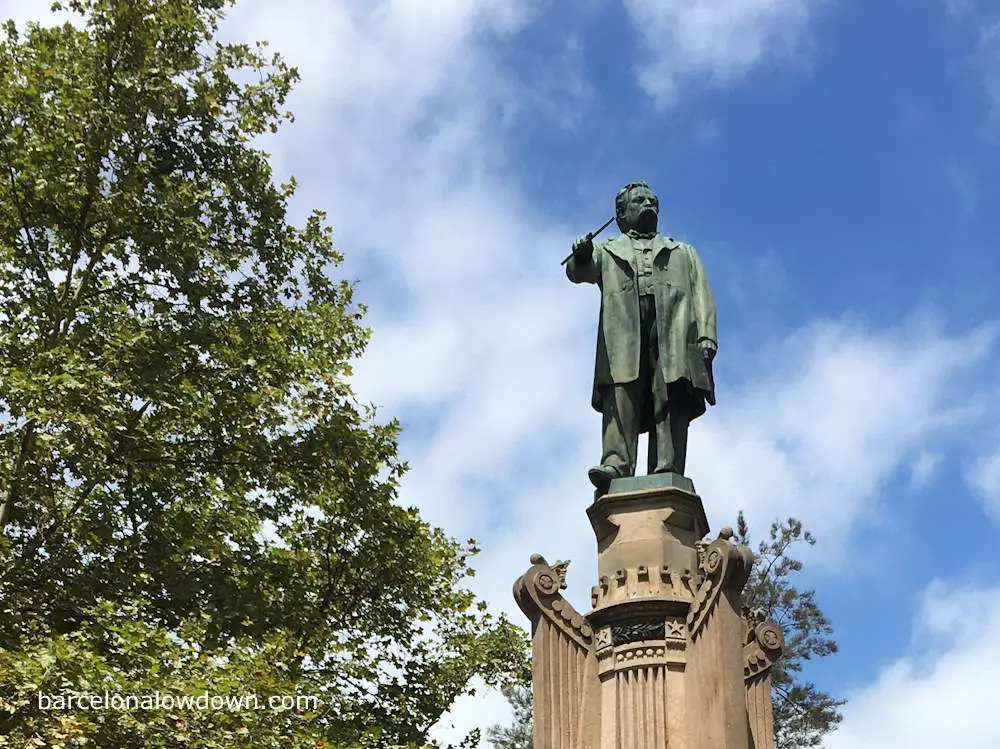
Shortly after being released from prison, Clavé began composing and publishing music. In 1850 he founded a choir called Sociedad Coral La Fraternidad. Cuve’s music was aimed at working class people and the choral society’s success soon led to similar groups being formed in other towns.
Clave’s political activism led to him being imprisoned on several occasions. Once in Barcelona, twice in the Balearic Islands and again in Madrid.
After serving a prison sentence in Mallorca, Clavé returned to Barcelona and opened theatre where he staged shows, concerts, and dances. At this point, there were so many choral societies in Catalonia that he set up an association to help organise them.
After the revolution of 1868 and the subsequent deposition of Reina Isabella II, Clavé was elected president of the Diputació de Barcelona. In 1874 a military coup put an end to the First Spanish Republic and Clavé died a few weeks later, aged forty-nine. He was buried in the Cemetery of Poblenou where there is another marble monument topped with a bronze bust.
Location
The monument is located on Passeig de Gràcia, between Carrer de Sant Antoni Maria Claret and Travessera de Gràcia.
How to get there
The nearest metro stop is Joanic on the yellow line (L4)
Other attractions nearby
- Palau Macaya
- Sagrada Familia
- La Pedrera
- Sant Pau Art Nouveu Site
- Casa Batlló
Map
Passeig de Sant Joan, Barcelona

